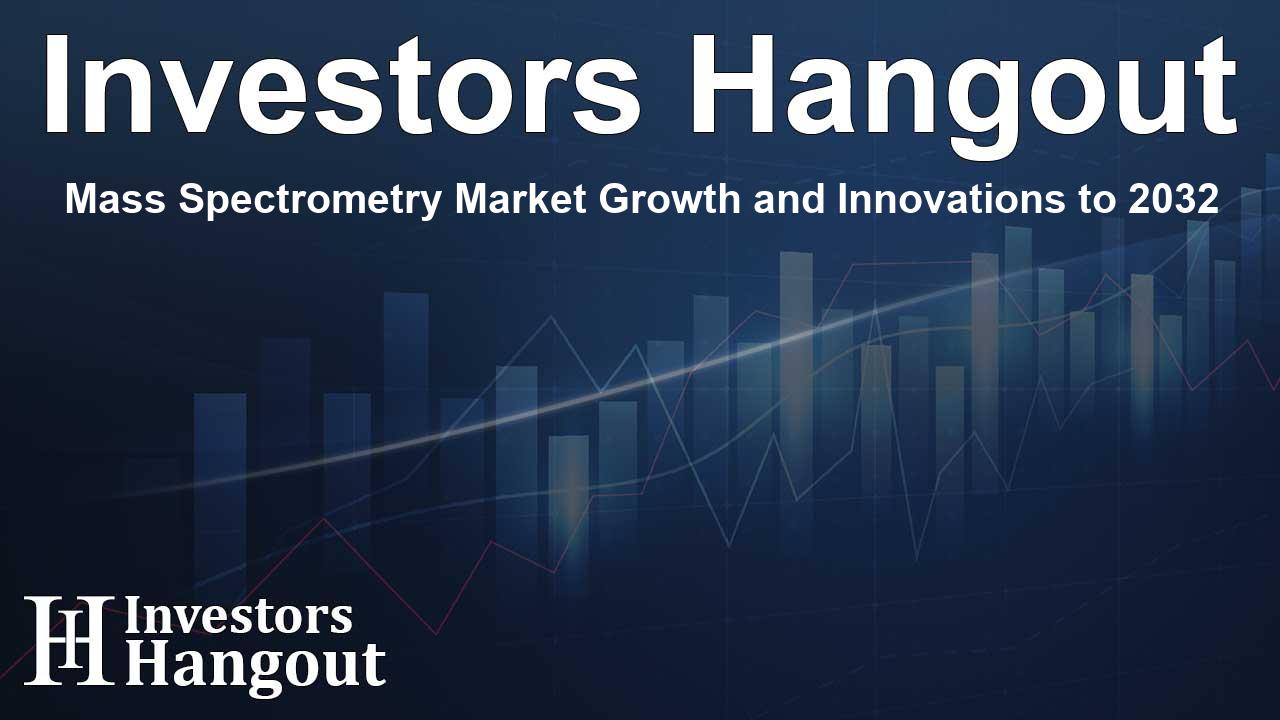Mass Spectrometry Market Growth and Innovations to 2032

Overview of the Mass Spectrometry Market
The mass spectrometry market is on a remarkable trajectory, with projections indicating it could exceed USD 11.25 billion by 2032. The demand is primarily being driven by various applications within pharmaceuticals, healthcare, and environmental analysis. With an impressive compound annual growth rate (CAGR) of 7.74%, the market is set to flourish as advancements in technology enhance the capabilities and sensitivity of mass spectrometry systems.
Key Drivers of Market Growth
As industries increasingly rely on precise measurement and analysis, mass spectrometry has emerged as a critical tool in numerous sectors. One of the primary reasons for its growth is the expanding role it plays in pharmaceutical research. Here, mass spectrometers are essential for drug discovery, empowering researchers to identify biomarkers and conduct clinical tests with remarkable accuracy.
Advancements in Instrument Technology
Technological innovation in this arena is unprecedented. Instruments are evolving with better sensitivity and automation, making them indispensable to laboratories worldwide. The impressive accuracy of hybrid mass spectrometry instruments, like Quadrupole-ToF and Triple Quadrupole, is pivotal for high-demand tasks in proteomics and environmental analysis.
Environmental Applications
The environmental sector's rising focus on monitoring pollutants is also fostering growth within the mass spectrometry market. This method is crucial for detecting harmful substances such as per- and polyfluoroalkyl substances (PFAS) and ensuring safety standards in our food supply. As concerns regarding food safety escalate, the adoption of mass spectrometry technology in testing and analysis is likely to increase substantially.
Market Segmentation Insights
The mass spectrometry market is categorized into different segments based on product type and application. Hybrid mass spectrometry systems continue to dominate the market due to their high accuracy and versatility, contributing around 48% of total revenue. The software and services sector, supporting data-intensive analysis techniques, represents the fastest-growing segment as more organizations demand sophisticated data management solutions.
Highlighted Market Applications
Furthermore, the applications of mass spectrometry extend into clinical diagnostics, food safety testing, and OMICS research, including genomics and proteomics. Each of these areas benefits from mass spectrometry's ability to provide detailed molecular information critical for compliance with health and safety regulations.
Global Market Dynamics
North America currently holds a significant share of the mass spectrometry market. With numerous pharmaceutical companies and research institutions headquartered in this region, the demand for advanced mass spectrometry solutions is robust. Companies such as Thermo Fisher Scientific and Agilent Technologies are at the forefront, continually pushing for advancements that cater to the unique needs of their clients in drug discovery and environmental monitoring.
Emerging Trends in APAC
Meanwhile, the Asia-Pacific region is witnessing rapid growth in mass spectrometry adoption. Countries like China and India are investing heavily in healthcare and environmental sectors, consequently increasing the demand for analytical instruments. The rise of new laboratories and research initiatives further highlights the importance of mass spectrometry in these markets.
Recent Innovations and Developments
Recent advancements are testament to the evolving landscape of mass spectrometry. Innovative methods for detecting PFAS in water have emerged from research institutions, ensuring better compliance with regulations. Additionally, new techniques that enhance proteomic analysis are being developed, indicating a shift towards more detailed and specific methods of analysis.
Future Outlook
The future of the mass spectrometry market looks promising. As industries call for greater precision and efficiency in testing capabilities, mass spectrometry technologies will continue to evolve. The integration of advanced analytical methodologies and automated systems illustrates a strong commitment to meeting increasing standards and complexities across various applications.
Frequently Asked Questions
What is the projected market size for mass spectrometry by 2032?
The mass spectrometry market is projected to surpass USD 11.25 billion by 2032.
Which sectors are driving the growth of the mass spectrometry market?
Key sectors include pharmaceuticals, healthcare, environmental analysis, and food safety testing.
What advancements are influencing mass spectrometry technologies?
Advancements in sensitivity, automation, and instrument resolution are significantly influencing the evolution of mass spectrometry technologies.
Which companies are leaders in the mass spectrometry market?
Thermo Fisher Scientific, Agilent Technologies, and SCIEX are among the leading companies in mass spectrometry.
Is mass spectrometry used in environmental applications?
Yes, mass spectrometry is widely used for environmental testing, particularly to monitor pollutants like PFAS.
About Investors Hangout
Investors Hangout is a leading online stock forum for financial discussion and learning, offering a wide range of free tools and resources. It draws in traders of all levels, who exchange market knowledge, investigate trading tactics, and keep an eye on industry developments in real time. Featuring financial articles, stock message boards, quotes, charts, company profiles, and live news updates. Through cooperative learning and a wealth of informational resources, it helps users from novices creating their first portfolios to experts honing their techniques. Join Investors Hangout today: https://investorshangout.com/
Disclaimer: The content of this article is solely for general informational purposes only; it does not represent legal, financial, or investment advice. Investors Hangout does not offer financial advice; the author is not a licensed financial advisor. Consult a qualified advisor before making any financial or investment decisions based on this article. The author's interpretation of publicly available data shapes the opinions presented here; as a result, they should not be taken as advice to purchase, sell, or hold any securities mentioned or any other investments. The author does not guarantee the accuracy, completeness, or timeliness of any material, providing it "as is." Information and market conditions may change; past performance is not indicative of future outcomes. If any of the material offered here is inaccurate, please contact us for corrections.